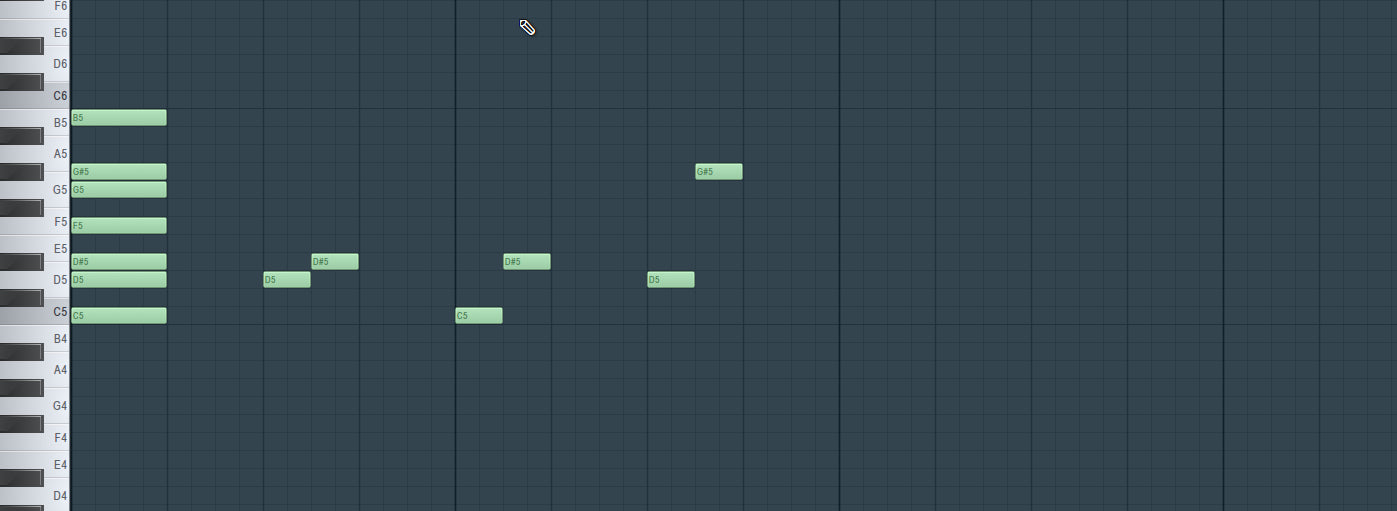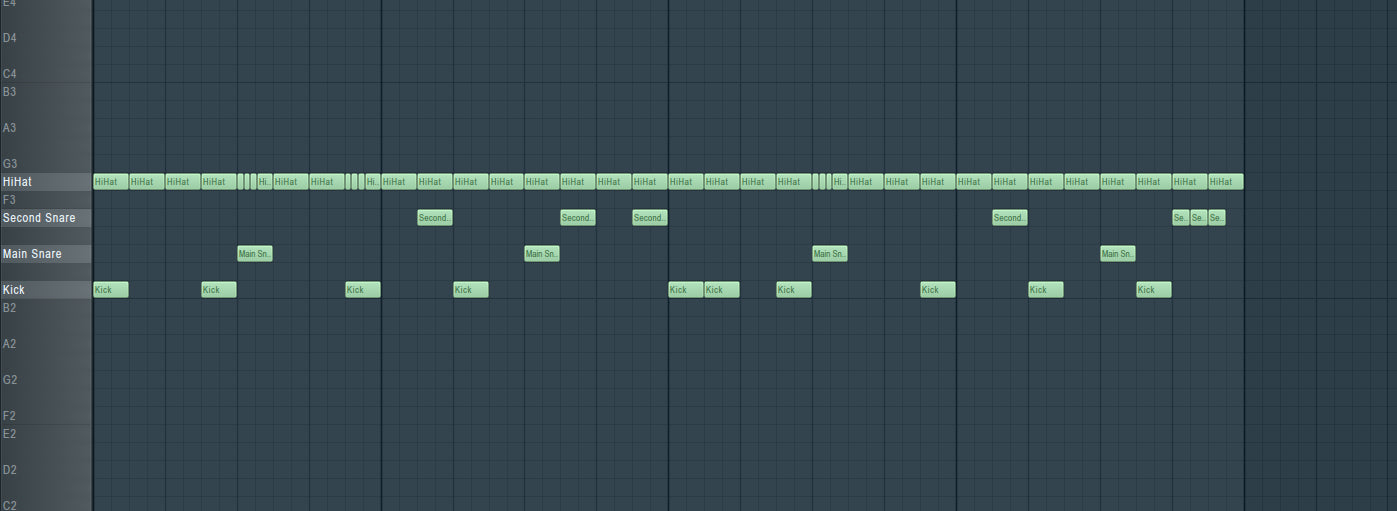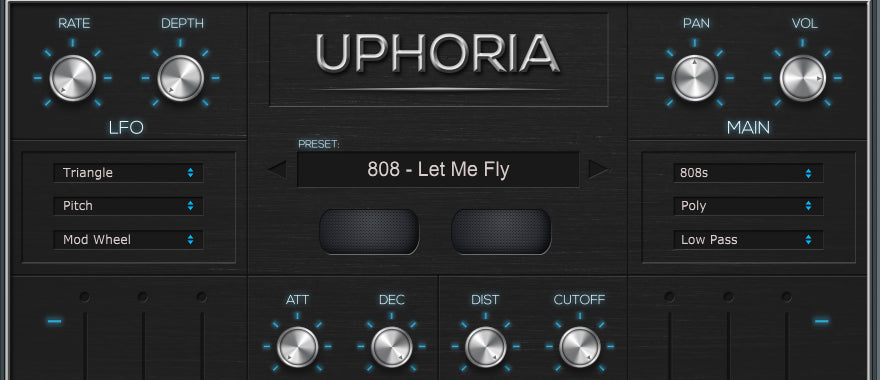Your Cart is Empty
⚠50% off code: SAMP50⚠
⚠50% off code: SAMP50⚠
⚠50% off code: SAMP50⚠
by Anders Johanson December 26, 2020 9 min read
Trap music and the beat makersanyone with a computer and a basic understanding of music production. With the right software, samples, and tutorials, aspiring producers can easily create their own trap beats and melodies. The popularity of trap music can also be attributed to its unique sound. The gritty, hard-hitting beats combined with catchy melodies and vocal hooks create an addictive listening experience. This distinct sound has attracted a wide range of listeners, from rap enthusiasts to mainstream music fans. Moreover, trap music's association with popular artists has helped propel its success. Superstars like Travis Scott, Future, and Migos have embraced the trap sound and achieved massive success with their trap-infused hits. Their influence has pushed trap music into the mainstream, making it a dominant force in today's music industry. Furthermore, the versatility of trap music has contributed to its widespread appeal. It has branched out beyond the rap genre and infiltrated other genres like EDM and pop music. Producers and artists from various music backgrounds have incorporated trap elements into their songs, adding a fresh and exciting twist to their sound. In conclusion, trap music has risen to prominence due to its accessibility, unique sound, association with popular artists, and versatility. Its impact on the music industry is undeniable, and it continues to evolve and dominate the charts. Whether you're a fan or not, trap music has become an integral part of contemporary music culture. beginner producersRap vocals are typically the focal point of a trap beat, meaning there is seldom a requirement for complex sound design or intense build-ups. This simplicity allows individuals to easily engage with the genre. Within this piece, we will delve into several key aspects of trap production and offer useful suggestions to assist you in crafting your very own trap beat promptly. Let us commence.
The response to this query is not straightforward as individuals have varied preferences for trap music. If you are creating instrumental tracks for rap artists, inquire about the specific traits they seek in a trap beat. Their responses will differ based on their personal tastes. Certain individuals will prioritize the track's atmosphere as it establishes the mood for their lyrics. Others will emphasize the importance of a memorable melody that drives the track. Additionally, some will emphasize the impact of a powerful kick, dynamic hi-hats and snare rolls, and a prominent bass line.
Still, a great trap beat typically exudes an atmosphere that is both aggressive and foreboding. To achieve this, it is crucial to select the appropriate musical scale that imbues these qualities into your sound. A scale is essentially a collection of notes that harmonize well together, thus preventing any dissonant melodies from emerging. By adhering to the correct scale, even individuals who are unfamiliar with music theory can construct a robust chord progression and melody that perfectly align with the genre. The three most frequently utilized scales within trap music encompass the natural minor scale, the harmonic minor scale, and the Phrygian scale. There is no need to memorize these scales, as we have conveniently provided the necessary HTML markup to incorporate them seamlessly into your compositions. StampThere is a handy feature within FL Studio called the "Scale Tool". With just a simple click, this tool allows you to access a vast array of scales. It provides an extensive list of chords and scale names, including the ones specifically sought after. So, by utilizing this feature, you can easily explore and utilize any scale that you can possibly imagine.
It is beneficial to work within these scales when writing a fitting trap melody, but it is also important to understand the elements that contribute to the distinctive sound of a melody. As previously mentioned, trap melodies generally evoke feelings of aggression, menace, and foreboding (unless it is intended for a party atmosphere). In music, there are specific melodic intervals that composers and producers utilize to elicit certain emotions. For a trap melody, we must incorporate intervals that generate tension and unease. This can be accomplished by incorporating minor 2nd, minor 3rd, and tritone intervals. By constructing the minor harmonic scale in the key of C using FL Studio’s piano roll, the minor 2nd intervals will occur between D to D#, G to G#, and B to C. To simplify, if your melody contains notes that are a semitone apart, you are incorporating minor 2nd intervals. If the notes are three semitones apart, like C and D#, or six semitones apart, like D and G#, you are utilizing minor 3rd or tritone intervals, respectively. While it is possible to create a suitable trap melody by ear, understanding these intervals will expedite the process of achieving the desired emotional impact.

A trap beat tempo, also referred to as BPM (beats per minute), determines the speed at which a song or beat is played. When examining your preferred trap beat, you will likely notice that the majority of them fall within the range of 120 to 160 BPM. A metronome set within this range will produce a rapid ticking sound, which is also commonly found in most EDM genres. If you were to listen to a techno song set at 140 BPM, you would perceive it as significantly more energetic compared to a traditional trap beat at the same BPM. This contrast in perceived speed can be bewildering if you are not familiar with the terminology of double-time and half-time.
the concepts are actually different. Double-time refers to a beat or rhythm that is twice as fast as the original tempo, while half-time refers to a beat or rhythm that is half as fast as the original tempo. It is important for producers to understand the distinction between these two terms in order to create the desired effect in their music.
double and halfHTML markup.
There are two adjectives that represent opposite ends of the spectrum. The reality is that it all depends on one's perspective. The majority of trap rappers tend to stick to a BPM (beats per minute) lower than 100. If any of them happen to rap at a faster tempo, they are typically labeled as double-time rappers. Most trap artists feel most comfortable performing within the 60 to 80 BPM range. So, if you come across an artist who requests a beat in 140 BPM, it's safe to assume that they will likely rap at 70 BPM. Essentially, their vocal performance will be in half-time. However, if you're dealing with an artist who has a deeper understanding of tempo and they inform you that their flow sounds optimal at 70 BPM, then you'll need to work in double-time, meaning a tempo of 140 BPM, when producing the beat.
DAW.
Why is it preferable to set the BPM to double-time when creating trap beats? Instead of simplifying things by matching the beat to the vocal tempo, most producers choose a higher BPM for easier programming of hi-hat and snare rolls. By setting the BPM to 140 in the DAW and treating each bar as half a bar, it effectively zooms in on the piano roll grid, allowing for quick hi-hat rolls without the need for additional note splitting tools. This also makes it visually easier to work with "normal" size notes, rather than tiny, difficult-to-select ones, speeding up the workflow.
While every trap beat possesses its own distinctiveness, there are several instruments commonly found within this genre. Now, let us delve into these instruments in greater depth.
It is undeniable that every trap beat requires
drumsthe topic, I would like to provide some preliminary information.
drum programming
When it comes to drumming, it's crucial to recognize the significance of establishing a solid foundation. By laying down the groundwork or the basic structure of the percussive rhythm, you provide yourself with a clear guideline that allows for unlimited creativity without the fear of unintentionally venturing into uncharted experimental realms.
includes all eight segments. This may require some adjustment to your mindset and approach to drum programming, but it is essential for achieving an authentic double-time feel. To begin, let's focus on the kick. In a regular four-beat bar, the kick typically falls on the 1 and 3 beats. However, in a double-time bar, we will need to place the kick on the 1, 3, 5, and 7 beats. This will create a driving rhythm that matches the faster tempo. Next, let's move on to the main snare. In a regular four-beat bar, the snare usually lands on beats 2 and 4. In a double-time bar, we will place the snare on beats 2, 4, 6, and 8. This will add a strong backbeat to our rhythm and help propel the track forward. Lastly, let's address the hi-hats. In a regular four-beat bar, the hi-hats typically play a constant eighth-note pattern. In a double-time bar, we will need to adjust this pattern to a sixteenth-note pattern. This means the hi-hats will play twice as many notes, creating a more energetic and frenetic feel. By adjusting the placement of these three elements - the kick, the main snare, and the hi-hats - we can create a unique and dynamic rhythm that suits the double-time tempo. Remember to keep the true bar length in mind and make the necessary adjustments in your drum programming to achieve the desired effect. FL StudioThe default presentation is displaying the instructions to us. Nonetheless, within our foundation, it is crucial to always position the kick drum at the beginning of the initial beat in each bar. Subsequently, we arrange the snare drum on the third and seventh beats. Lastly, we complete the pattern by adding hi-hats in such a way that there is one hi-hat every two steps. Refer to the provided image and replicate the arrangement in your digital audio workstation (DAW) if these directives appear too vague.
Now that we have identified the characteristics of a trap drum foundation, it is time to continue our exploration.
get creativeand program some of those recognizable hi-hat and snare rolls. In essence, your objective is to utilize the available spaces within the loop to enhance the drum sound. Currently, there are two steps between the hi-hats. To generate captivating hi-hat rolls, simply click on the designated area and program the desired rolls.
Snap to grid tool and select noneBy making the piano roll grid more detailed, it will provide a higher level of granularity. Choose a specific location where you want to incorporate a hi-hat roll and begin populating the individual squares, exploring various patterns throughout the process. If you require any inspiration, refer to the following example of a hi-hat pattern.
positioning of the second snare carefully. Experiment with placing it slightly ahead or behind the main snare hit to create interesting syncopation. The combination of hi-hat rolls, kick variations, and snare positioning will add depth and complexity to your drum loop, making it stand out and keeping the listener engaged. Remember to keep experimenting and adjusting until you achieve the desired sound. Enjoy the process and have fun creating unique and dynamic drum loops for your music production.
1/3 step option in the Snap to gridTo enhance your drum loop, consider incorporating the snare at the conclusion. This addition will create a satisfying drum fill, serving as a brief segue between different sections. Take a look at this example to see how your drums may appear after implementing these instructions.

The connection between the trap sound and the 808 bass is extremely close. In some cases, powerful drums and a 808 sub that evokes strong emotions may be all that is necessary to create a quality trap beat. Initially, the term "808" referred to the Roland TR-808 drum machine, which was introduced in 1980. While this drum machine offered a variety of sounds such as claps and cymbals, the name "808" eventually became synonymous with the trap sub-bass.
sample pack that includes pre-recorded 808 sounds. Many producers have created their own versions of the iconic 808 drum sounds, so there are plenty of options available. However, if you want to add your own unique twist to the sound, it's worth experimenting with synthesis techniques to create your own custom 808 bass sounds.
trap sample packor utilize a VST rompler akin to
or opt for a VST rompler similar to
Uphoria by AngelicVibesunique sound that includes a variety of sampled 808s and other instruments commonly used in trap music. It is important to ensure that the kick and 808 complement each other effectively. The kick should be strong, brief, and impactful, while the 808 should be longer, filling the low-frequency range of 40 to 80 Hz. By blending these two bass elements, you will be able to create a distinct sound that features multiple sampled 808s and other trap-related instruments. Regardless of the direction you choose, it is crucial to focus on the harmony and balance between the kick and the 808.
powerful low-end for your beat.

music, there are a variety of options available. Whether you're a seasoned musician or just starting out, finding the right instruments can greatly enhance your musical journey. From guitars and keyboards to drums and saxophones, the choices are endless.
One important factor to consider when selecting instruments is your personal preference. What type of music do you enjoy playing? Do you prefer acoustic or electric instruments? Taking the time to evaluate your musical style and preferences can help guide you in making the best choices.
Another crucial aspect to keep in mind is your skill level. If you're a beginner, it may be wise to start with simpler instruments that are easier to learn and play. As you progress and gain more experience, you can gradually upgrade to more advanced instruments that challenge and inspire you.
Budget is also a significant consideration. Different instruments come in various price ranges, so it's essential to set a budget and stick to it. There are quality options available in every price range, so you don't have to break the bank to find an instrument that suits your needs.
Lastly, don't forget about the availability of accessories and maintenance. Instruments often require accessories such as cases, stands, and replacement parts. It's crucial to factor in these additional costs and check the availability of accessories before making a final decision.
In conclusion, choosing the right instruments for your musical journey is a personal and individual decision. Taking into account your musical preferences, skill level, budget, and availability of accessories will help ensure that you find the perfect instruments to accompany and elevate your musical talents.
trap chord progressionsWhen it comes to creating trap music, there are numerous options available for sound design and melodies. Many trap producers often opt for the use of romplers, which are VST plugins containing a vast collection of sampled sounds. These romplers have become incredibly popular within the trap music community.
Omnisphere 2 by Spectrasonics, ReFX Nexus, and ElectraX by Tone2
Just by utilizing one of these romplers, you will be able to discover a wide range of sounds, spanning from pianos and organs to bell tones and flutes. It's astonishing to see the number of trap beats that have made it onto the billboard charts, all produced using these plugins. So, do not be hesitant to incorporate them into your own work. What has proven successful for professionals can also bring success to you.

Creating Unique Trap Beats In order to craft a truly one-of-a-kind trap beat, it is essential to include various sections such as an intro, a few verses with catchy lyrics, captivating choruses, and a smooth outro. When it comes to rap verses and choruses, it is customary to have 16 bars and 8 bars respectively. As for the introduction and conclusion, their length can vary between 4 and 8 bars. One important aspect to consider is the tempo of the track. If you are working with a double-time BPM, each vocal performance bar will require two bars of instrumental accompaniment. This means that when producing the beat using a digital audio workstation (DAW), a verse section should consist of 32 bars, while the chorus section should span 16 bars. By following these guidelines and unleashing your creativity, you can produce a unique trap beat that will surely captivate your audience.
You have the freedom to choose how to structure the beat, and each artist may have their own preferences regarding the arrangement. To improve your skills in arranging trap beats, a helpful approach is to analyze and break down the arrangement of your favorite trap beat in your digital audio workstation (DAW). By learning how experienced producers arrange their tracks, you will greatly benefit in the future and even avoid writer's block, as you will have a rough idea of how many sections you should complete. For instance, consider a trap beat in 162 BPM that consists of an intro with 16 bars, two verses with 32 bars each, three choruses ranging from 16 to 8 bars, and an outro that gradually fades out over approximately 12 bars.

While there isn't a single blueprint for creating a trap beat, there are numerous recurring elements that are present in beats within this genre. It is my hope that this piece has provided you with fresh inspirations and resources to embark on crafting your own unique productions.
by Anders Johanson January 30, 2021 12 min read
Read Moreby Anders Johanson January 30, 2021 11 min read
Read Moreby Anders Johanson January 18, 2021 9 min read
Read More
Get discount codes for sample packs, Acquire discount codes for sample packs, Get free sounds delivered directly to your inbox , and many other things! Believe it or not, we enthusiastically distribute complimentary audio files!